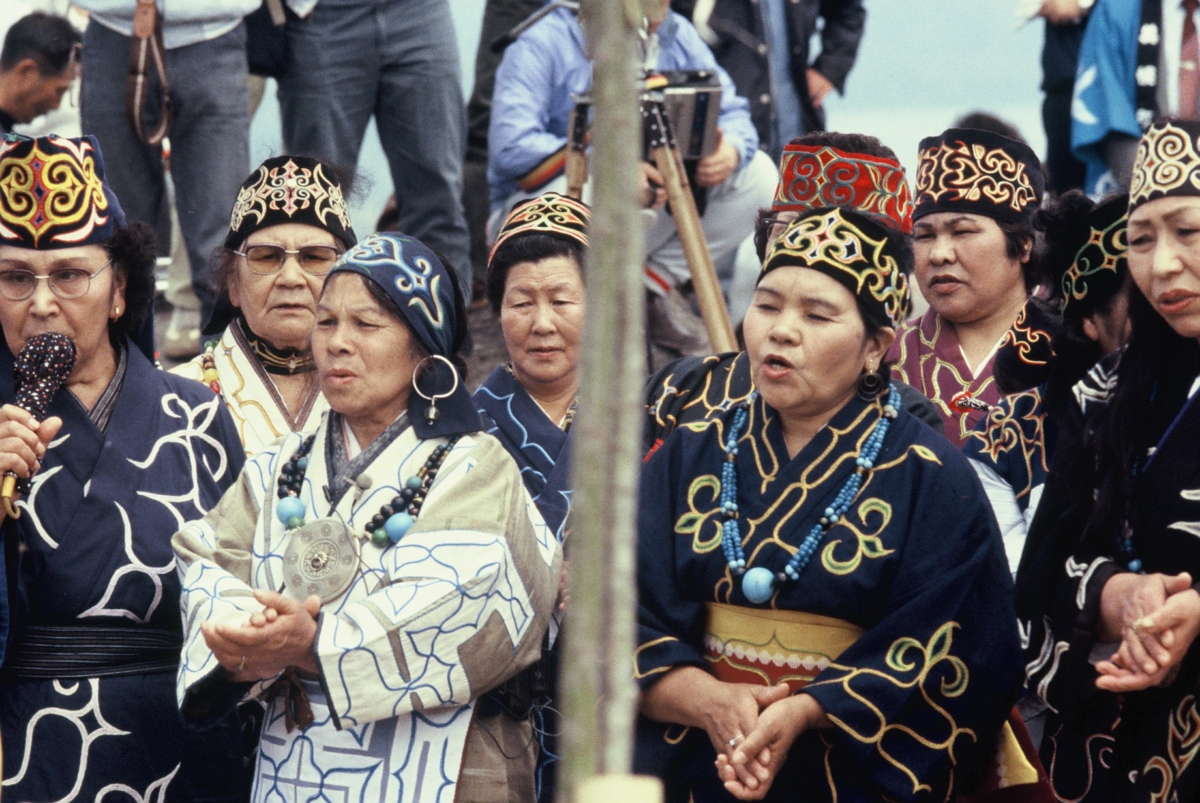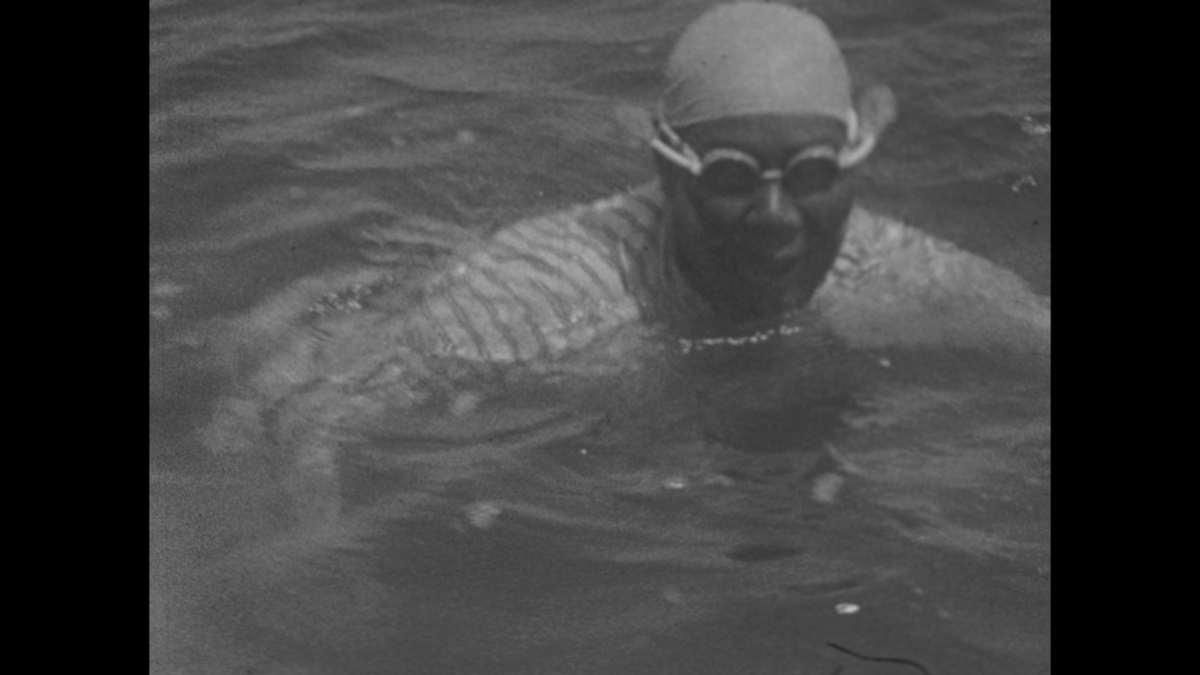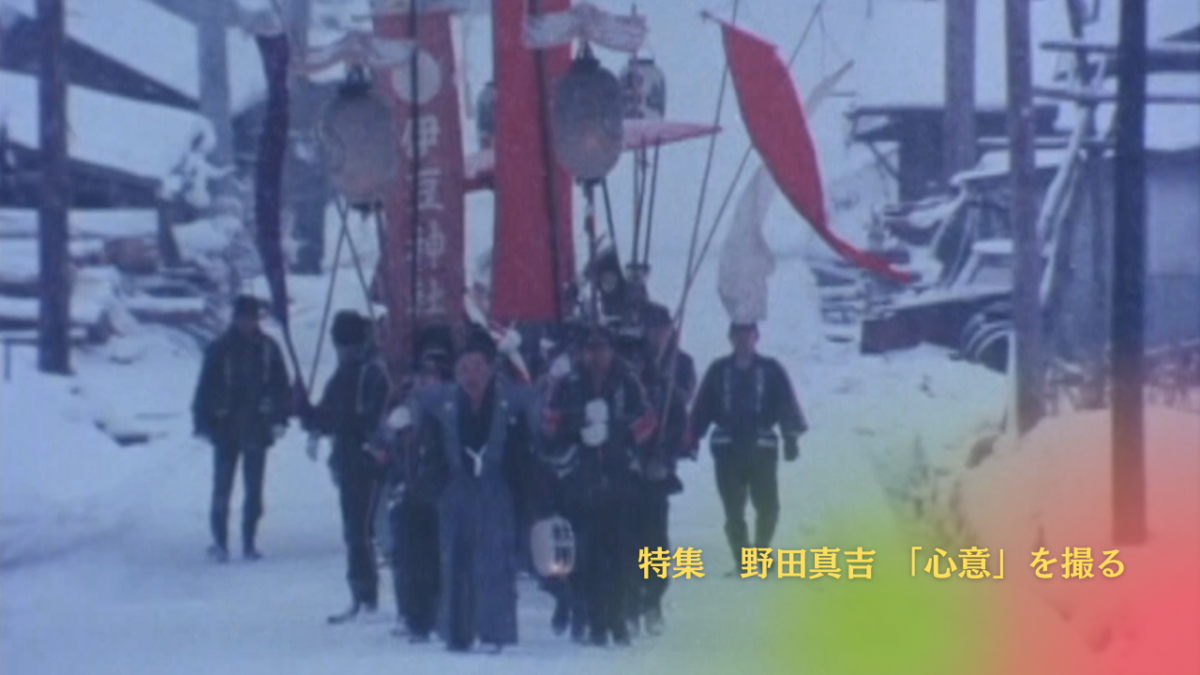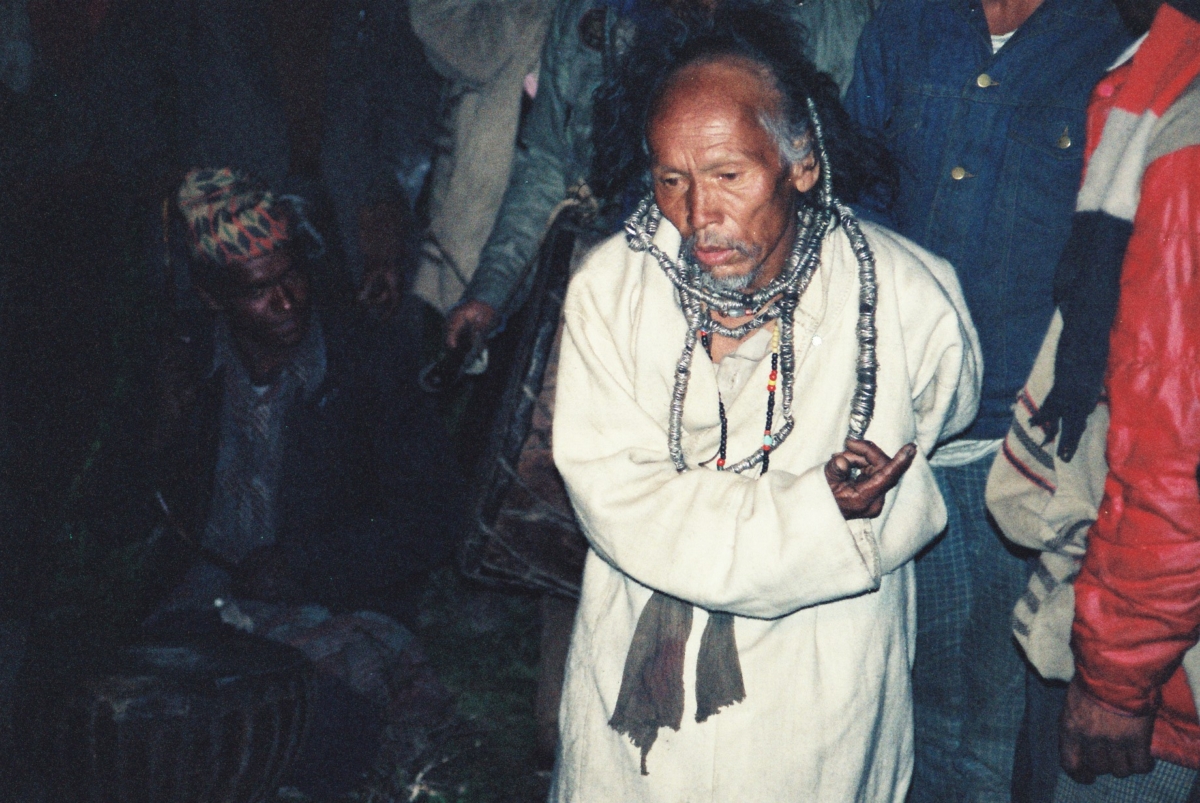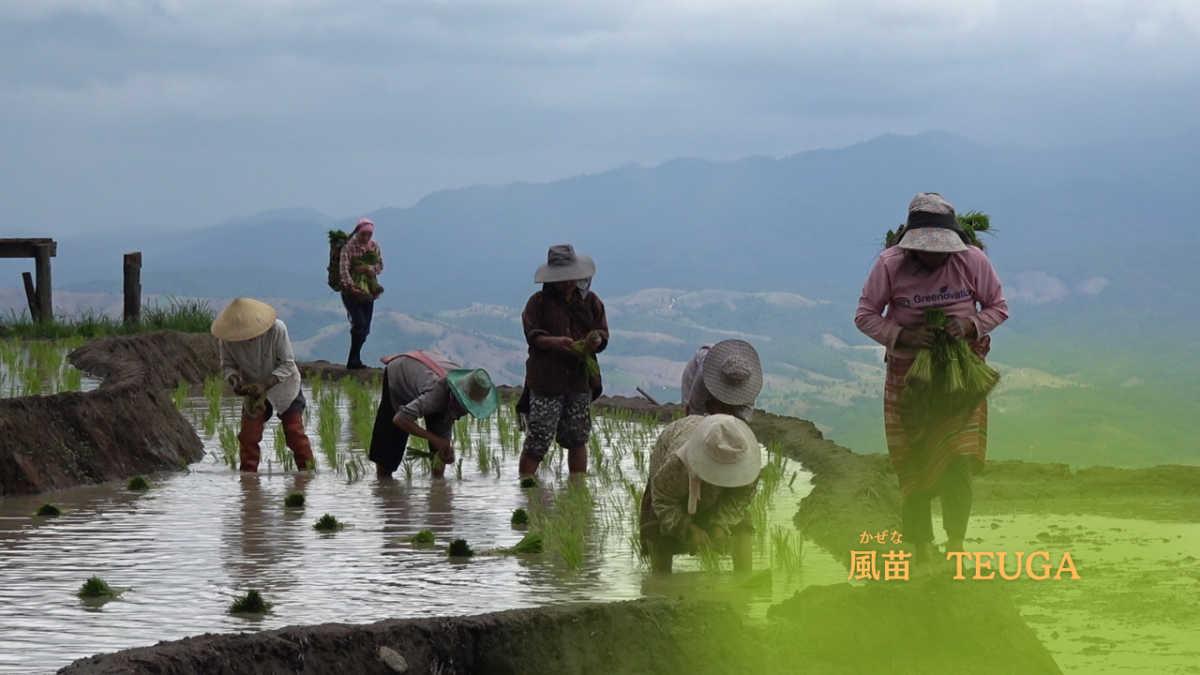2023.06.26
English Titles

ETHNOS CINEMA is the first website in Japan that specializes in the distribution of ethnographic films. The site presents masterpieces of ethnographic documentary films and films by field researchers rarely seen by the public.
SUWA ONBASHIRA FESTIVAL 1992(English Narration)
Since ancient times, the magnificent Onbashira Festival (Nagano Prefecture, Japan) has been held only once every six years, in the years of the Tiger and Monkey. The festival revolves around felling large trees in the mountains, hauling the logs down to Shrine compounds and then revering them as gods. The festival is made up of a number of ceremonies and rituals, such as the Ki-otoshi (log chute), Kawa-goshi (river crossing) and Tate-onbashira (raising of the pillar). This film is a complete record of Onbashira, the biggest pillar-raising festival in the world.

The Tibetan Book of the Dead: Thanatology of Tibetan Buddhism(English Narration)
What does death means to the living?
“Tibetan Book of the Dead” is a deep insight and understanding of death, that has been obtained by sincere quest and accumulation of knowledge. It tells that transmigration of souls can be led to their enlightenment. And it is still read besides a dying person.
This illumination film, based on the latest research, explains the most essential tenets of the book in simple and clear terms. Showing computer graphics of mandalas and thangkas, and precious footage of Tibetan death rituals including a sky burial, this documentary guides you to the Tibetan Esoteric Buddhism to understand death.
“Tibetan Book of the Dead” is a deep insight and understanding of death, that has been obtained by sincere quest and accumulation of knowledge. It tells that transmigration of souls can be led to their enlightenment. And it is still read besides a dying person.
This illumination film, based on the latest research, explains the most essential tenets of the book in simple and clear terms. Showing computer graphics of mandalas and thangkas, and precious footage of Tibetan death rituals including a sky burial, this documentary guides you to the Tibetan Esoteric Buddhism to understand death.
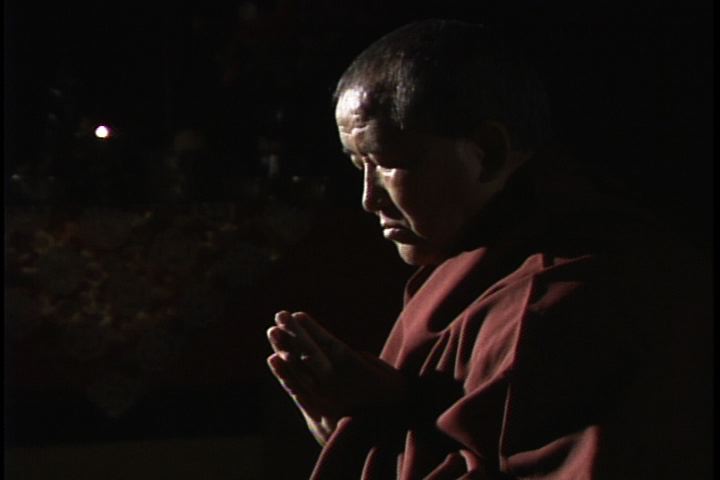
KAGURA TROUPE ON THE BEAT -Mawarikagura-
The Kuromori Kagura which has continued to this day on the Sanriku coast of Iwate Prefecture is the focus of this documentary. It captures both the kagura troupe who for over 340 years have continued performing the ritual dance at home after home no matter how many times tidal waves have come, as well as the people living on the coast after the Great East Japan Earthquake.
The kagura troupe, who narrowly escaped the tidal wave after the Great East Japan Earthquake struck, travel to the coast just as they had before. As divine emissaries, they travel throughout Sanriku where the gods and spirits still live and breathe and provide repose for the souls of the deceased and encouragement for the living. Fishermen along the coast look out to sea as they once again set sail.
(2017/94min/color/16:9)
73rd MAINICHI FILM AWARDS DOCUMENTARY FILM AWARD
2017 KINEMA JUMPO CULTURAL FILM BEST TEN
OFFICIAL SELECTION
NIPPON CONNECTION 2019 NIPPON DOCS
32nd TAKASAKI FILM FESTIVAL
The kagura troupe, who narrowly escaped the tidal wave after the Great East Japan Earthquake struck, travel to the coast just as they had before. As divine emissaries, they travel throughout Sanriku where the gods and spirits still live and breathe and provide repose for the souls of the deceased and encouragement for the living. Fishermen along the coast look out to sea as they once again set sail.
(2017/94min/color/16:9)
73rd MAINICHI FILM AWARDS DOCUMENTARY FILM AWARD
2017 KINEMA JUMPO CULTURAL FILM BEST TEN
OFFICIAL SELECTION
NIPPON CONNECTION 2019 NIPPON DOCS
32nd TAKASAKI FILM FESTIVAL
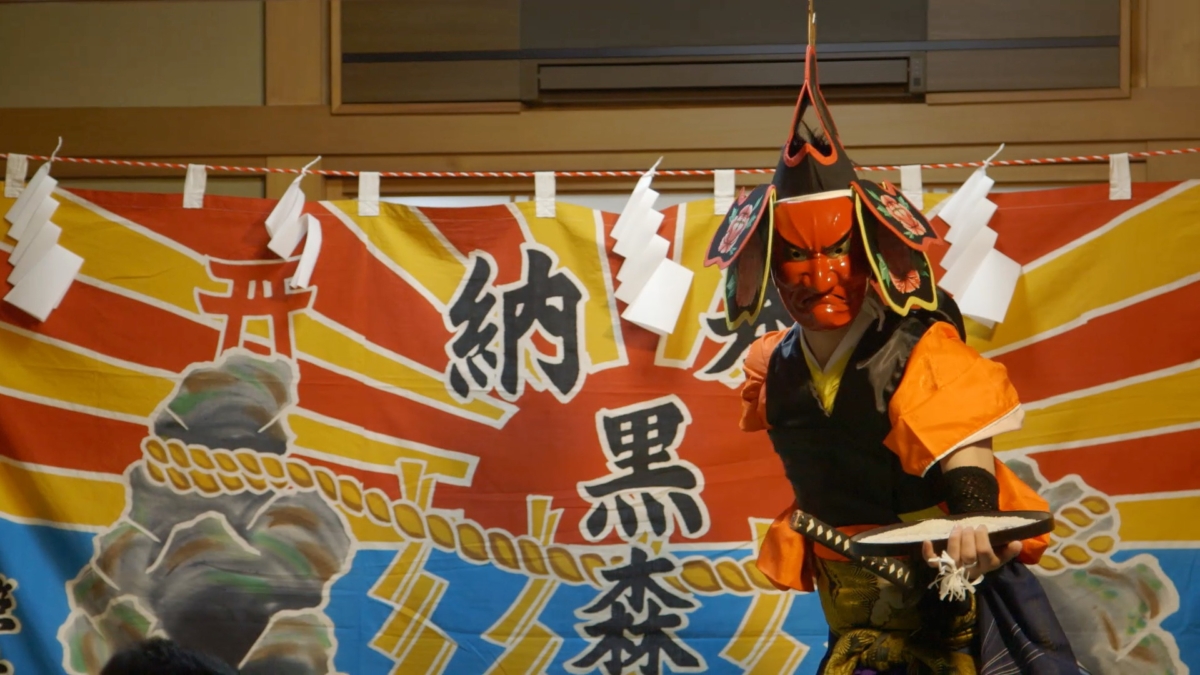
TEUGA
A Karen village in Thailand’s highest mountain (Doi Inthanon), home to both wildlife and indigenous peoples, has traditionally coexisted with its natural landscape through rice cultivation. However, for Asak’s young family, a recent interest in domestic tourism on the mountain has created new avenues of metamorphosis for village life.
This film will not only evoke in audiences a sense of the Karen people's temporal and spatial lifeworld, but also allow self reflection of the landscapes that have embraced us, that we live today, and that we will nurture into the future.
(2020/46min/color/16:9)
Cinematography, sound recording, edited and directed by Tatsuki Shirai
Cast: Asak, Kanchana, Poneuteu and others
Song: "Ta Mue Le Ke Chu" (Happiness on the Mountain) written and performed by Wichai Sangangam
Encouragement Award, "Anthropology/Folklore Video" Division, Tokyo Documentary Film Festival 2021
Official selection
Vision du Réel 2021 VdR-Market
27th Film Festival della Lessinia
8th Bozcaada International Festival of Ecological Documentary
This film will not only evoke in audiences a sense of the Karen people's temporal and spatial lifeworld, but also allow self reflection of the landscapes that have embraced us, that we live today, and that we will nurture into the future.
(2020/46min/color/16:9)
Cinematography, sound recording, edited and directed by Tatsuki Shirai
Cast: Asak, Kanchana, Poneuteu and others
Song: "Ta Mue Le Ke Chu" (Happiness on the Mountain) written and performed by Wichai Sangangam
Encouragement Award, "Anthropology/Folklore Video" Division, Tokyo Documentary Film Festival 2021
Official selection
Vision du Réel 2021 VdR-Market
27th Film Festival della Lessinia
8th Bozcaada International Festival of Ecological Documentary
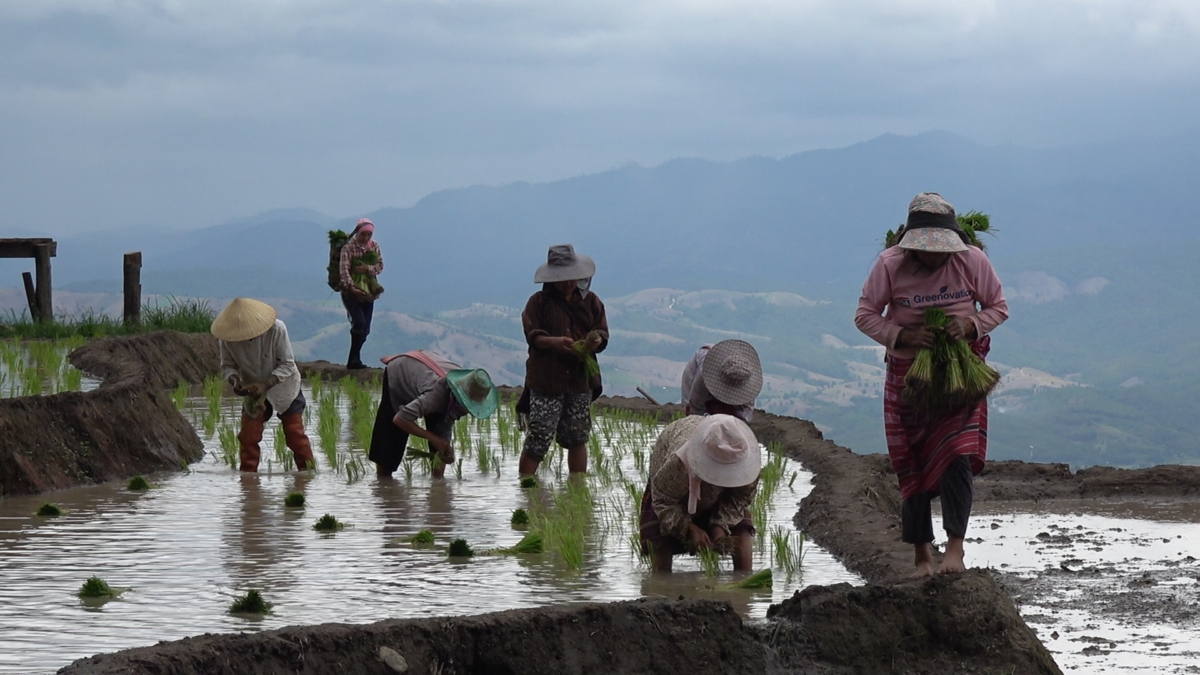
Naga Log Drum
We made a huge log drum that is over 10 meters long. It’s one of the unique cultures of the Naga, an ethnic minority living in the border region between Myanmar and India.
Myanmar, located at the western edge of Southeast Asia between Thailand and India, is a multi-ethnic country with more than 100 ethnic groups. The Nagas live in the northwestern part of the country, in the hilly region that separates India and Myanmar. Most of the Naga people in Myanmar live a self-sufficient life in the mountains deep in the country. Due to a combination of harsh geography and complicated politics, the entrance to the hilly areas where they live has been closed for a long time. In the village of Sapallo, which I visited in February and March 2016, I witnessed the Naga people making giant drums, a tradition that has been handed down from generation to generation. I kept my eyes glued to the events, which I had never seen or heard of before, and continued to record them every day. Spinning the memories of those days, I created this "Naga Log Drum”.
(67min/2019/HD/color)
Shooting・Editing・Sound Design:Hiroshi Iguchi
Official selection of Tokyo Documentary Film Festival2020(Tokyo, Osaka)
Myanmar, located at the western edge of Southeast Asia between Thailand and India, is a multi-ethnic country with more than 100 ethnic groups. The Nagas live in the northwestern part of the country, in the hilly region that separates India and Myanmar. Most of the Naga people in Myanmar live a self-sufficient life in the mountains deep in the country. Due to a combination of harsh geography and complicated politics, the entrance to the hilly areas where they live has been closed for a long time. In the village of Sapallo, which I visited in February and March 2016, I witnessed the Naga people making giant drums, a tradition that has been handed down from generation to generation. I kept my eyes glued to the events, which I had never seen or heard of before, and continued to record them every day. Spinning the memories of those days, I created this "Naga Log Drum”.
(67min/2019/HD/color)
Shooting・Editing・Sound Design:Hiroshi Iguchi
Official selection of Tokyo Documentary Film Festival2020(Tokyo, Osaka)

SONG OF THE ARAYO
Every year during the Flying Fish Season, large predatory fish such as ‘arayo’ (coryphaena hippurus) pursue the flying fish on their great journey northwards. The fish migrate past Lanyu, and the men of the Yami tribe set out to sea in their traditional canoes to hunt the arayo. The arayo is thought to be a sacred fish, and the Yami believe they must observe complex taboos to ensure a successful catch. Siyapen Makkarash (68) sets out to sea early on the first morning of the fishing season. He quickly catches a flying fish and lashes it to his hook to use as live bait. Rowing back and forth in his distinctive handmade boat, he sings to call the arayo over, promising to sacrifice a cockerel in his boat, there, out at sea, if only an arayo would swim over and take a bite. With a glint of scales, a large arayo strikes his hook and leaps from the water. Makkarash has a fight on his hands...
Directed by: Andrew Limond
Produced by: Kitamura Minao, Miura Yoko
Directed by: Andrew Limond
Produced by: Kitamura Minao, Miura Yoko
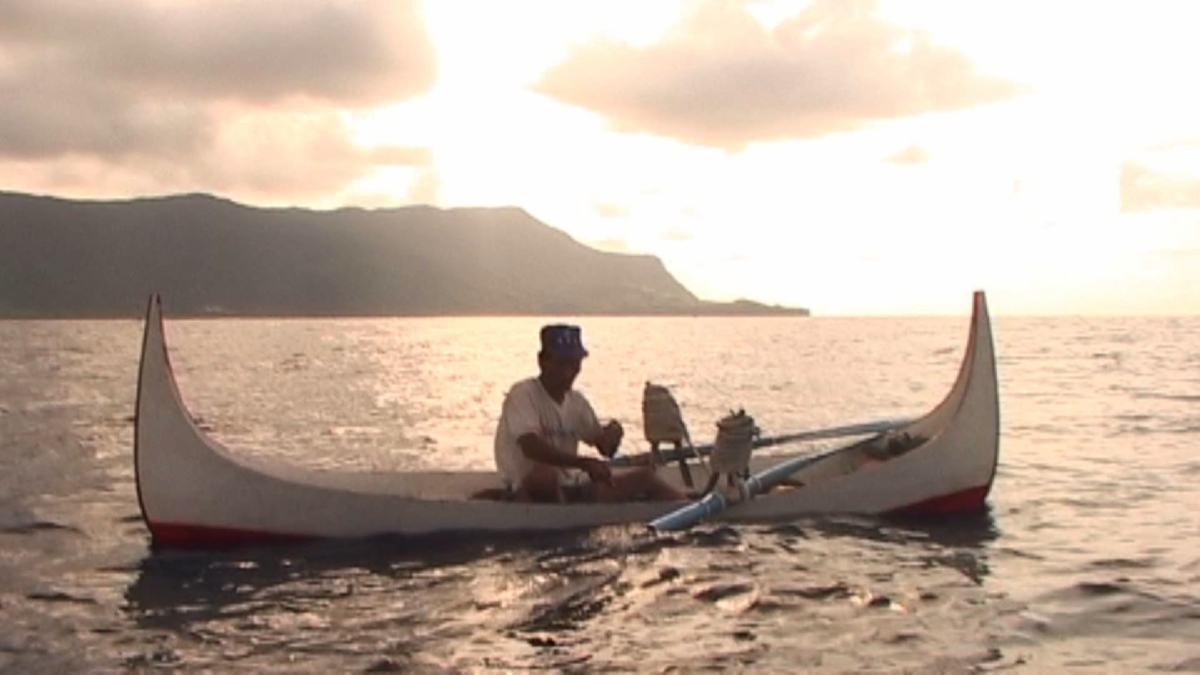
CINADKERAN : BOAT OF THE BLACK CURRENT
Lanyu (Orchid Island), which lies off the SE shores of Taiwan, is inhabited by the Yami tribe. Their ancestors built ‘cinadkeran’, or traditional 10-man flying fish canoes, and legend has it that such boats carried them from the Batan Islands in the Philippines to their new home on Lanyu many hundreds of years ago. But it has been 27 years since the inhabitants of Imorod village have built a cinadkeran. ‘Cinadkeran’ tells the story of the first such boat to be built after all those years, from the felling of the first tree and the painstaking construction process ― riveting, carving, painting ― through the extraordinary boat ceremony, right up to the boat’s maiden voyage to catch flying fish almost one year later. A year in the life of the Yami tribe. This documentary also portrays the rivalry between two men, both of whom wish to become the boat-guardian of the cinadkeran ― the position which commands most respect in Yami society. For it is the boat guardian who must carry out elaborate ceremonies to appease the powerful spirit which resides within the cinadkeran, in order to ensure that disaster will not befall the village...
Directed by: Andrew Limond
Sound effects: Saito Tsuneo
Audio mixing: Imori Masanobu
Narration: Stuart A. Varnam-Atkin
Academic Cooperation: The Taiwan Yami Culture Research Forum, Inui Naohiko, Minagawa Ryuichi
Translation: Siyapen Monod, Siyapen Jazikna (Siyapen Kotan)
Produced by: Kitamura Minao, Miura Yoko
Cameramen: Andrew Limond, Goto Ippei, Kanazawa Yuji
2nd Unit Director: Jin Akira
Directed by: Andrew Limond
Sound effects: Saito Tsuneo
Audio mixing: Imori Masanobu
Narration: Stuart A. Varnam-Atkin
Academic Cooperation: The Taiwan Yami Culture Research Forum, Inui Naohiko, Minagawa Ryuichi
Translation: Siyapen Monod, Siyapen Jazikna (Siyapen Kotan)
Produced by: Kitamura Minao, Miura Yoko
Cameramen: Andrew Limond, Goto Ippei, Kanazawa Yuji
2nd Unit Director: Jin Akira

